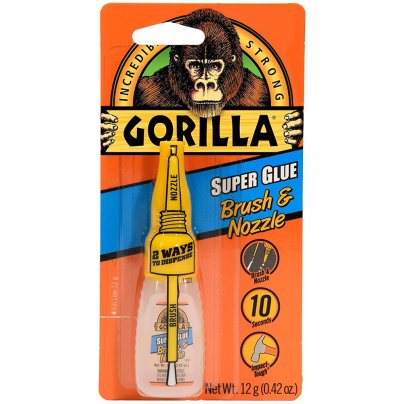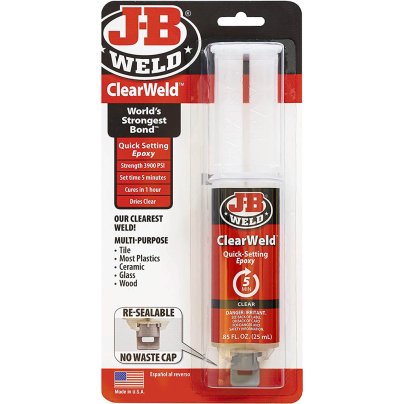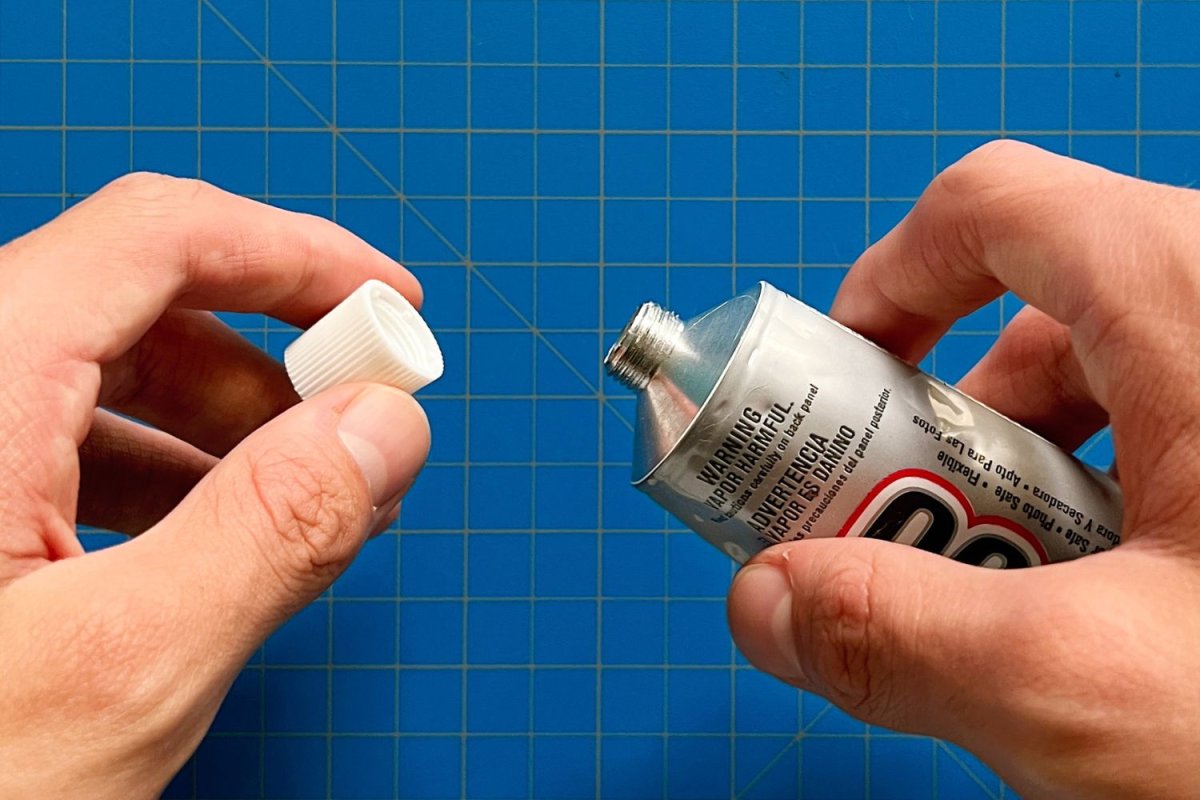
We may earn revenue from the products available on this page and participate in affiliate programs. Learn More ›
Breaking a ceramic household item is frustrating, but most can be repaired—so long as you have all the pieces and a high-quality adhesive. The best glue for ceramic can not only rescue small shattered and broken objects, but it can even fix ceramic tiles and countertops. If you own or work with ceramics often, it’s wise to have a specialty glue on hand.
We tested a variety of super glues and epoxies on some of the most common ceramics used in the home, including stoneware, porcelain, and earthenware, to determine their ease of application, drying times, and cured finish color. Use this guide to the best ceramic glues to find the product you’ll want to keep in your tool kit or utility drawer.
- BEST OVERALL: Gorilla Super Glue Brush & Nozzle
- BEST BANG FOR THE BUCK: Krazy Glue Home & Office Brush-On Glue
- BEST EPOXY: J-B Weld 50112 ClearWeld Quick-Setting Epoxy
- BEST CERAMIC GLUE FILLER: J-B Weld 50101 MinuteWeld Instant-Setting Epoxy
- BEST WATERPROOF: Gorilla Glue Original Waterproof Gorilla Glue
- BEST FOOD-SAFE: DAP All-Purpose 100% Silicone Adhesive Sealant
- MOST VERSATILE: Eclectic Products E6000 Craft Adhesive
- ALSO CONSIDER: Pratley Adhesives Quickset White Epoxy
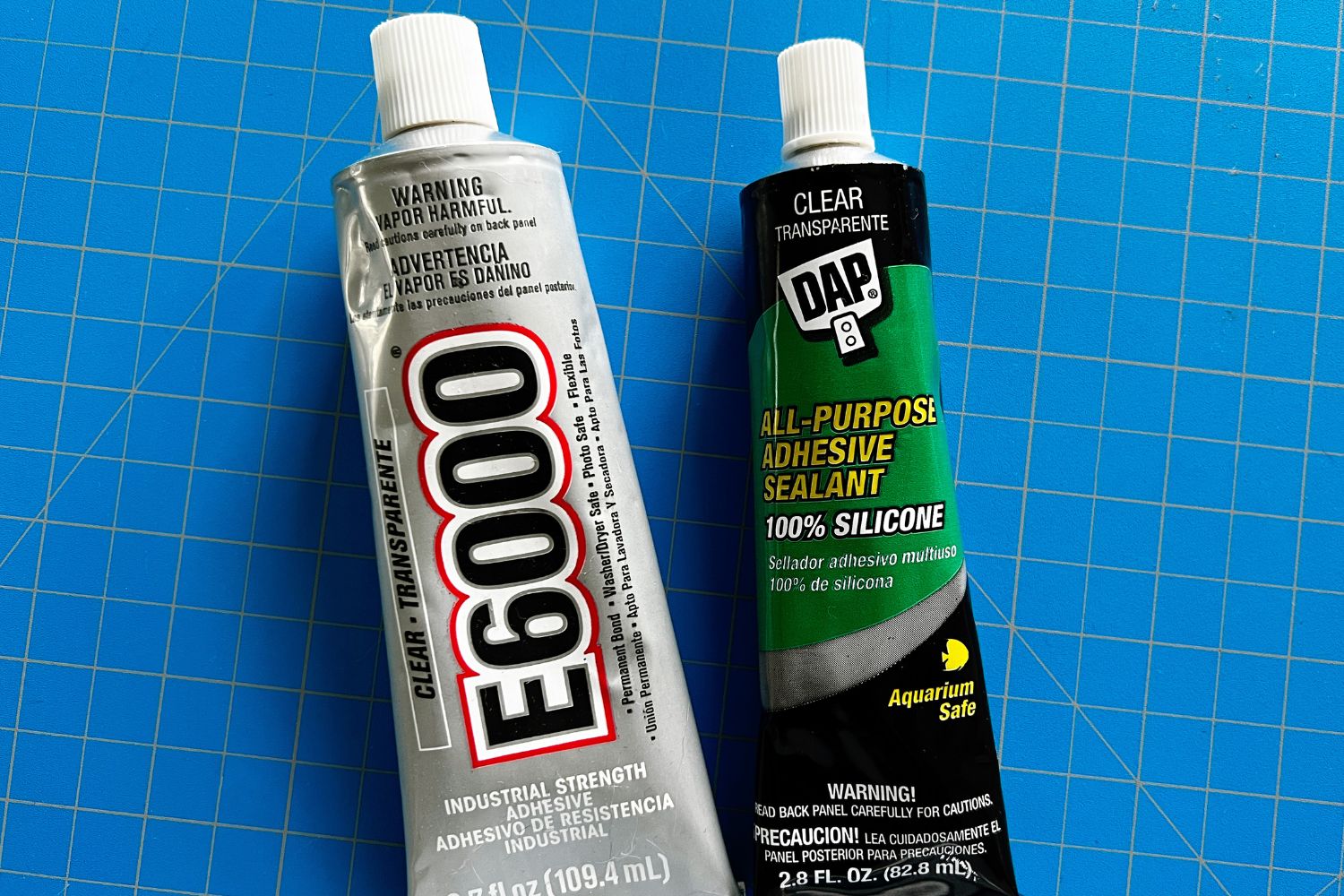
How We Tested the Best Ceramic Glues
We tested these adhesives based on three criteria: bonding time, applicator type, and the product’s color when dried. All glues tested indicated their suitability for three ceramic items: earthenware, stoneware, and porcelain.
We held each ceramic piece in place by hand or clamp for the bonding time recommended by the manufacturer; generally, we found the bond set faster than the manufacturer’s claim. Most of the glues came with only one type of applicator, except for the Gorilla Super Glue, which had a brush and nozzle applicator.
Our Top Picks
Although all the glues we tested in our hands-on review will repair broken ceramic items, some are easier to use and have faster drying times than others. From this list of top picks, you’ll likely find the glue for ceramic repairs and other projects that’s right for your needs.
Best Overall
Gorilla Super Glue Brush & Nozzle
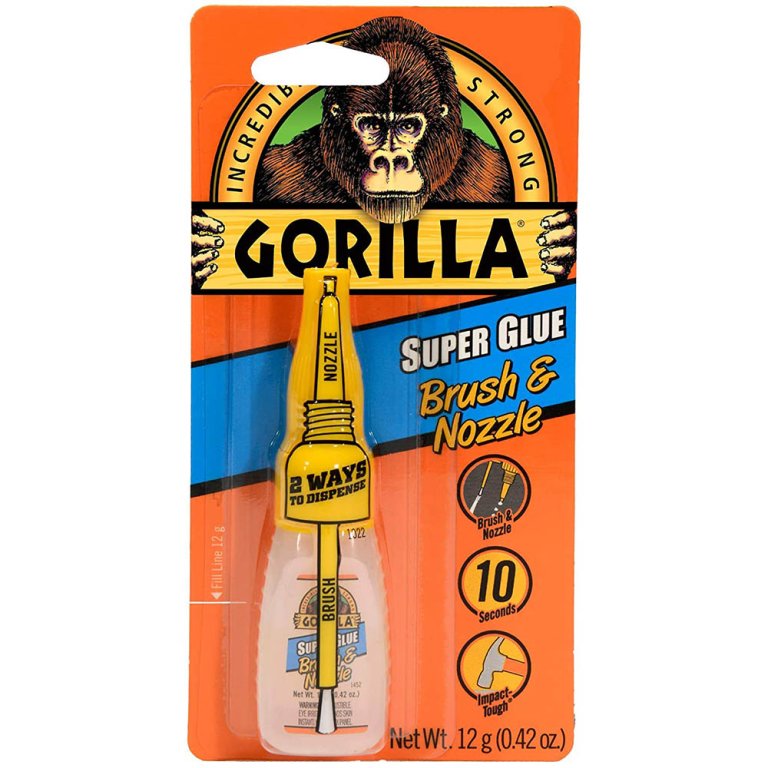
Product Specs
- Bonding time: 10 to 45 seconds
- Finish: Clear
- Applicator: Brush and nozzle
With a unique formulation that includes rubber particles to increase bond strength and impact resistance, Gorilla Super Glue gel is the best product we tested for general ceramic repairs. This Gorilla Glue can also be used on plastic, metal, stone, fabric, paper, and rubber, among other materials, and it dries in less than 45 seconds. It also dries clear to help make repairs undetectable.
Beyond the glue’s impressive properties, this product includes two applicators to fine-tune usage to suit the project: a fine-bristle brush for smaller, thin cracks and a precision-tip nozzle for quick, accurate dispensing. Practice makes perfect when using the applicators, however. In our tests, the Gorilla Glue took several tries with the tip applicator to get the glue flowing at the ideal rate. The brush applicator is easy to use, but the viscosity of the gel made it tricky to get the right amount of adhesive on the brush without making a mess.
This Gorilla Glue is neither U.S. Food and Drug Administration (FDA) approved for food safety nor water-resistant. It has a strong odor that dissipates after drying, but it should be applied in a well-ventilated area.
Get the Gorilla super glue for ceramic repairs at Amazon, Lowe’s, Ace Hardware, The Home Depot, Walmart, or Target.
Best Bang For The Buck
Krazy Glue Home & Office Brush-On Glue
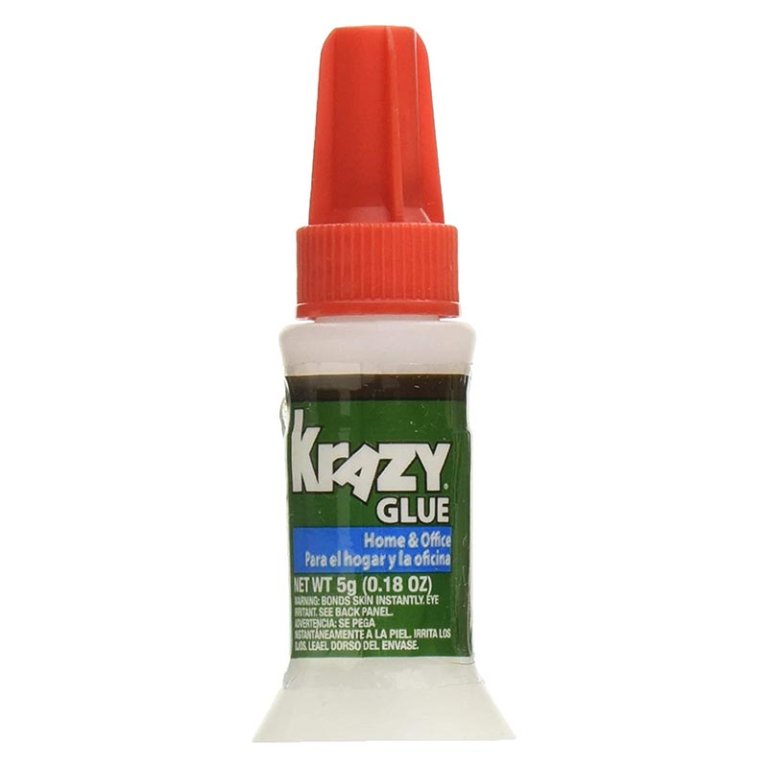
Product Specs
- Bonding time: 30 seconds
- Finish: Clear
- Applicator: Brush
For a fast, strong bond at a budget-friendly price, consider Krazy Glue Home & Office glue. It bonds instantly on ceramics as well as metal, vinyl, plastic, and wood. The included brush applicator is easy to control and provides excellent coverage, even in tight spaces. The well-designed no-clog bottle keeps the glue fresh and the brush bristles from sticking together.
When putting Krazy Glue through its paces, we found it to create a very strong bond with just a small amount of product. But while the brush does make application easy, the glue itself is clear and thin, so it’s a bit hard to see. Plus, because it dries so quickly, we suggest doing a dry run: Practice replacing the broken pieces together so you’ll know just where to place them after adding the glue.
This low-priced household staple is available in a six-pack. It is neither water-resistant nor FDA-approved for food safety.
Get the Krazy Glue glue for ceramic repairs at Amazon or Walmart (1-pack).
Best Epoxy
J-B Weld 50112 ClearWeld Quick-Setting Epoxy
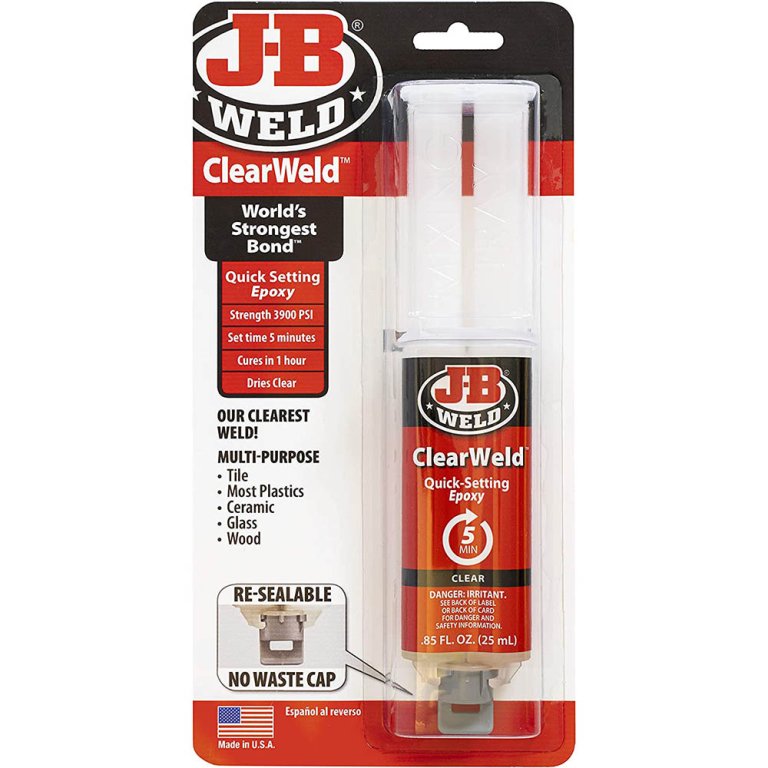
Product Specs
- Bonding time: 5 minutes
- Finish: Clear
- Applicator: Packaging itself is syringe dispenser
J-B Weld ClearWeld quick-setting epoxy is a multipurpose adhesive that provides strong, durable, and clear bonds on everything from ceramic and glass to wood and plastic. It has a pounds per square inch (PSI) of 3,900, creating a significantly stronger bond than most glues, which range between 500 and 2,000 PSI.
The epoxy comes with a mixing tray, a stir stick, and a craft stick for application; the bottle itself is a syringe dispenser. Though quick-setting for an epoxy—it dries in 5 minutes and cures in an hour—we found it essential to clamp or hold items together as it set. The benefit of this set time is that it allows for adjustments if needed. This epoxy is neither FDA-approved for food nor waterproof.
Get the J-B Weld ClearWeld glue for ceramic repairs at Amazon, Lowe’s, The Home Depot, or Walmart.
Best Ceramic Glue Filler
J-B Weld 50101 MinuteWeld Instant-Setting Epoxy
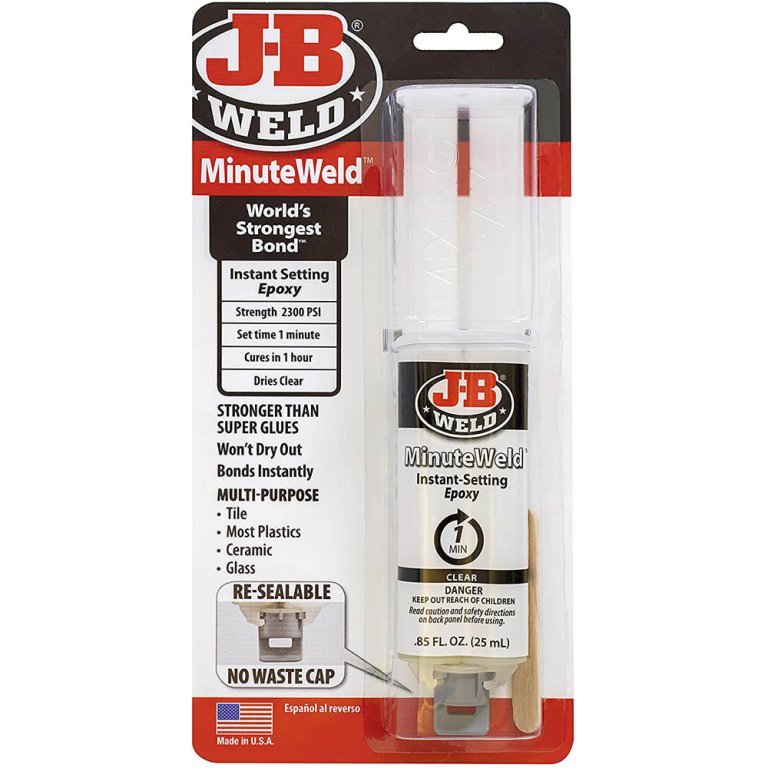
Product Specs
- Bonding time: 1 minute
- Finish: Clear
- Applicator: Wood craft stick
More than a mere adhesive, this two-part epoxy quickly fills cracks and crevices in ceramics quite well. With a strength of 2,300 PSI, the heavy-duty epoxy is extremely strong; it’s also versatile, working on tile, fiberglass, plastic, PVC, wood, and concrete, as well as ceramics.
J-B Weld MinuteWeld epoxy sets in under a minute and takes about an hour to cure fully. The epoxy includes a syringe, mixing tray, and stir stick to prepare the formula easily. In our tests, the epoxy successfully filled cracks in ceramic vases. As with all epoxies, working rather quickly is essential; when we tested this epoxy, we made sure to have the broken ceramic pieces within reach. Although this product creates a strong bond, it’s neither FDA approved for safety nor waterproof.
Get the J-B Weld MinuteWeld glue for ceramic repairs at Amazon, Lowe’s, Ace Hardware, or Walmart.
Best Waterproof
Gorilla Glue Original Waterproof Gorilla Glue
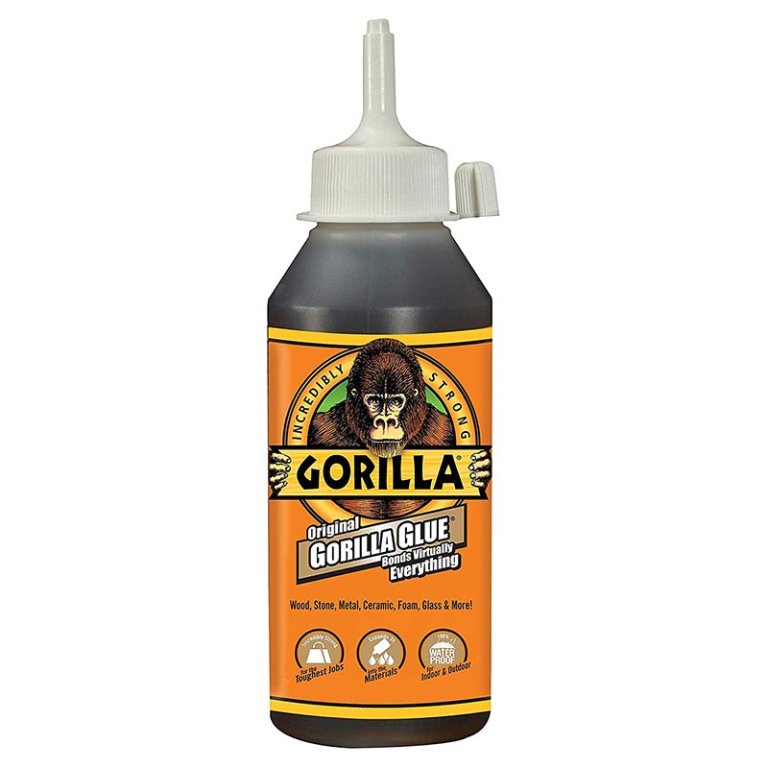
Product Specs
- Bonding time: 1 to 2 hours
- Finish: Tan
- Applicator: Nozzle
Gorilla Original Waterproof Gorilla Glue won’t break down when exposed to water, making it an ideal choice for a ceramic vase or planter as well as items that spend time outdoors and exposed to the elements. This water-activated polyurethane-formulated Gorilla Glue expands three times into the material to form a strong bond that’s durable and long lasting.
This waterproof glue is versatile, working well on wood, metal, foam, glass, stone, and concrete in addition to ceramics. In our tests, we found that the glue effectively bound broken ceramic planters with ease. However, it can take up to an hour to bond, requiring tape or clamps to hold the pieces in place. We also found the large bottle to be cumbersome, and it’s not great for use on smaller objects due to the large applicator opening. It’s not FDA approved, however, so it should never be used on items that come into contact with food.
Get the Gorilla original glue for ceramic repairs at Amazon, Lowe’s (4 ounces), Ace Hardware, Walmart, or Target (2 ounces).
Best Food-Safe
DAP All-Purpose 100% Silicone Adhesive Sealant
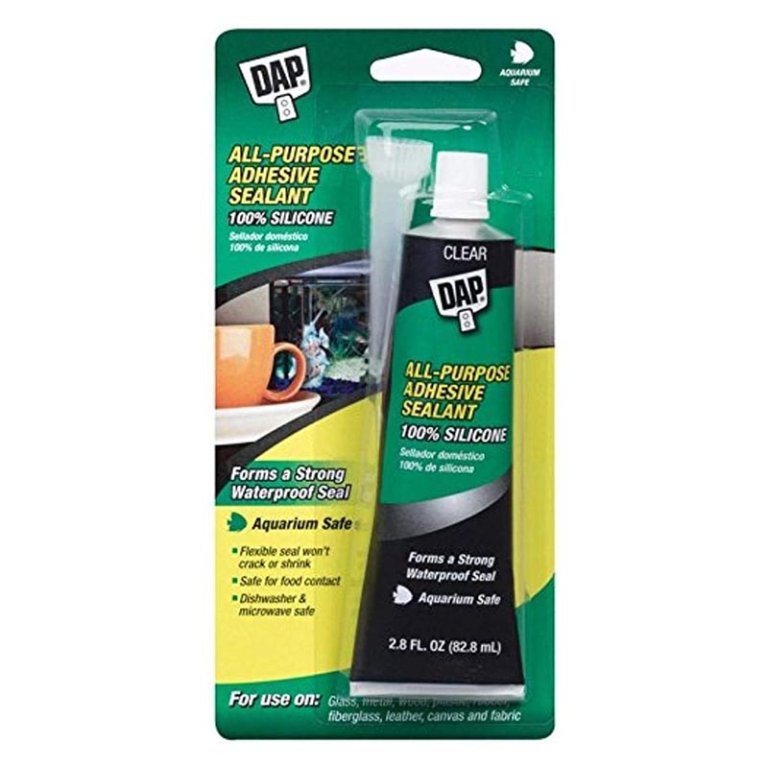
Product Specs
- Bonding time: 10 minutes
- Finish: Clear
- Applicator: Plastic applicator
Don’t cry over spilled milk or broken dishware. DAP silicone adhesive sealant is a fine choice for safely fixing a favorite mug, plate, or other item that comes in contact with food and drinks. DAP’s brand is well known for nontoxic, strong adhesives often used in schools, workshops, and offices.
This clear-drying glue offers a 100 percent waterproof bond upon testing and can be put in the dishwasher and microwave after curing fully in just 24 hours. The glue has a plastic applicator with three options for size openings. We found in our testing that the applicator wasn’t super useful because it did not help control the glue flow very well; there was also no cap to keep the glue from drying out. It’s made for one-time use. We ended up skipping the applicator, dispensing the glue directly onto a ceramic surface, and using a toothpick to spread the glue into the right areas.
The glue is viscous and easy to spread without the fear of drips. It doesn’t release a strong odor, so you don’t need to wear or use a respirator in a well-ventilated area. However, the glue takes time to bond. While fixing a mug handle, we used painter’s tape to hold the piece while the glue set. Once cured, the bond is somewhat flexible. We recommend using this glue only for ceramics that come into contact with food.
Get the DAP glue for ceramic repairs at Amazon, Ace Hardware, or Walmart.
Best Food-safe
Eclectic Products E6000 Craft Adhesive
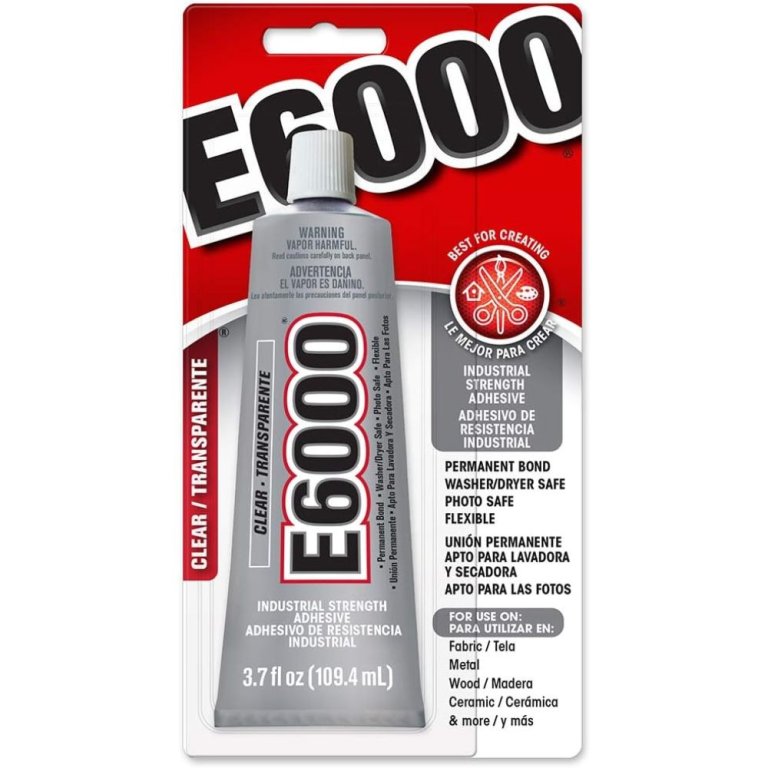
Product Specs
- Bonding time: 20 minutes
- Finish: Clear
- Applicator: None
Eclectic Products E6000 craft adhesive is a versatile, high-performance glue that forms a strong bond with almost any material and remains flexible once cured. The glue is popular among craft enthusiasts, DIYers, and professionals due to its robust and reliable bonding properties.
The E6000 adheres to many surfaces with a durable and clear bond. It is suitable for bonding ceramics and various materials, such as wood, metal, glass, fiberglass, masonry, concrete, asphalt, leather, rubber, PVC, neoprene, vinyl, and many plastics. The glue is also resistant to water, chemicals, and extreme temperatures, making it ideal for indoor and outdoor projects.
This glue has been a standard adhesive among our crafting tools for years. It’s a solid performer but only suited for repairs on surfaces that do not come into contact with consumables. Although it creates a strong bond, it takes 20 minutes to set and 24 to 72 hours to cure completely, depending on the thickness of the application. However, once the glue cures, it forms a durable, flexible bond that is chemical- and abrasion-resistant, waterproof, and paintable.
The glue is viscous, and the tube does not have a precision applicator, making it hard to control. In testing, we found it best to dispense this glue on cardboard and use a toothpick or craft stick to apply the adhesive to the surfaces. If applying it to a vertical surface, you must use masking tape or another method to keep materials in place until the glue sets. The E6000 also releases a strong odor. This glue must be used in a well-ventilated area or with a respirator.
Get the Eclectic Products glue for ceramic repairs at Amazon, The Home Depot (2 ounces), or Michaels.
Honorable Mention
Pratley Adhesives Quickset White Epoxy
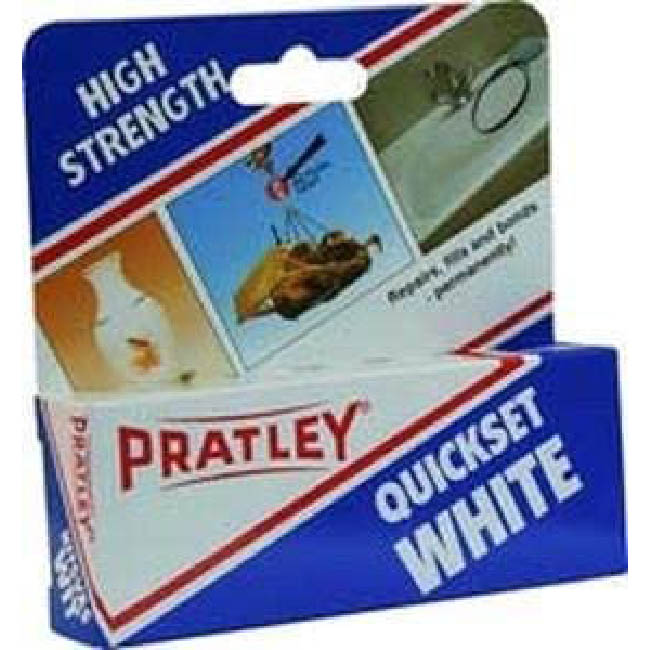
Product Specs
- Bonding time: 3 minutes
- Finish: White
- Applicator: Wood craft stick (not provided)
Those looking for a strong adhesive that works fast may wish to consider Pratley Quickset white epoxy glue. It can be used to bond pieces together and to fill holes, cracks, and gaps. A good choice for rough, rigid, and painted surfaces, it is often used to repair decorative ceramics, yet its high strength makes it a top choice for sinks as well as stone, concrete, glass, fiberglass, and metal.
Pratley Quickset’s two-tube system requires mixing, but no mixing tray or stir stick is included. In our tests we did find that it does bond quickly, though, in just 3 minutes, and the product reaches 75 percent of its strength in only 30 minutes. While the epoxy is white and will show, it can be painted to disguise the repair. It is neither waterproof nor FDA approved.
Get the Pratley Adhesives glue for ceramic repairs at Amazon.
Jump to Our Top Picks
What to Consider When Choosing a Glue for Ceramic Repairs
Now that we’ve reviewed the best types of glue for ceramics, let’s go over some specifics. Everything from formulation to applicator to drying time can affect how well the adhesive will repair a ceramic piece. Read on to learn what you’ll want to consider before purchasing a new ceramic glue.
Glue Type
There are all types of glue, but the most common types for ceramic repair are super glue and epoxy.
- Super glue uses cyanide-derived cyanoacrylate to create a strong bond. This convenience product dries in seconds and, unlike epoxy, requires no mixing. It’s great for lightweight ceramics and creating bonds in a thin space, such as putting a broken rim of a planter back together.
- Epoxies include a hardener and a resin that, when mixed, provide a strong bond that’s ideal for ceramics. While a little extra effort is required to prepare, and drying times are longer, epoxy is more durable than super glue, so it’s the better choice for fixing items that get a lot of handling. Epoxies can also be used as fillers due to their viscosity. They effectively fill in dents, scratches, cracks, holes, or joints and can be sanded and painted to camouflage the repair.
Applicator and Container Shape
Many super glues have a small applicator tip to deposit the adhesive on the exact spot to be repaired. Some products have a nozzle for more precise application. Other glues come with a brush to allow more control over how thick or thin the product goes on.
The shape of the container can also be an important factor in ease of use if it’s basically an extension of the applicator. Certain container designs are less likely to cause dripping. Avoid containers that drip, which wastes product and increases the risk of glue coming in contact with the skin, causing irritation.
Drying Time and Opacity
Every adhesive, no matter the type, has a different drying time, which will usually be printed somewhere on the label. Generally, epoxies take about 30 seconds to 5 minutes to set and up to several hours to cure. Quick-setting adhesives like super glue—which typically dries in seconds—don’t give much adjustment time; it’s best to do a dry fit first before adding the adhesive to ensure you position the pieces correctly.
Drying opacity is another aspect to keep in mind. Most glues will dry to a transparent finish so that the product won’t show on the ceramic. However, some change color as they dry. If using the glue as a filler, make sure to choose one that will match the color of the ceramic piece.
Food Safety
What makes many ceramic adhesives so strong is their chemical composition. Unfortunately, these chemicals are often not “food-safe,” meaning they should not be used on dishes, cups, or other items used for food and drinks. Most super glues contain cyanoacrylate. The chemical can cause skin irritation and minor stomach upset if ingested. Although the chemical is minimally toxic in small amounts, the FDA does not recommend it for use on any object that comes in direct contact with food or drinks.
If the ceramic piece being repaired is used to serve or display food, look for an FDA approval stamp on the product label. That certification is the only way to know for sure that the glue is food-safe. An FDA stamp is not important for items that won’t be around food.
Waterproof vs. Water-Resistant
Many but not all adhesives for ceramics are either waterproof or water-resistant. If your ceramic item is regularly exposed to liquids or kept in a typically moist environment, it’s wise to use a waterproof glue. Epoxies may be waterproof, while super glues are more likely to be water-resistant. A water-resistant glue should hold up fine to hand-washing, and some can even survive a dishwasher. Read labels or online product information to determine if a glue is water-resistant or waterproof.
Accessories
As with most crafting products, ceramic glues may come with accessories that can be useful for repairs. Typically, these are tools that assist in application, such as a scraper, spatula, or an attachment that allows for better control of the flow of glue. Some adhesives come with multiple tops, syringes, and nozzles so you can brush on the glue or squeeze it out.
When working with super glues and epoxies, it’s a good idea to do your repairs over a tarp or sheet to protect the surface below. These aren’t usually available with adhesives, however.
Tips for Using Glue for Ceramic Repairs
While many crafters rely on a great glue gun, a high-quality epoxy or super glue is often a staple for numerous projects—especially if working with ceramics. These adhesives are also handy for around-the-house repairs, such as putting together a shattered flowerpot or repairing a decorative porcelain statuette. Consider these tips to obtain great results when using glue on ceramics:
- Clean the ceramic pieces fully and allow them to dry completely before applying the adhesive.
- If using epoxy, apply it within 3 minutes of mixing it to avoid it drying.
- Hold pieces of the ceramic together until they are firm and stable.
- Use tweezers to help hold smaller pieces in place.
FAQs
You now know what it takes to choose and properly use the best glue for ceramics, yet you may still want more information. Read on for answers to some of the most common questions about selecting and applying epoxy and super glue.
Q. Can you glue ceramic cookware?
Yes, but only if the glue is FDA approved.
Q. Is Gorilla Glue good for ceramic repairs?
Yes; Gorilla Super Glue is the brand’s most recommended product for ceramic repair.
Q. How do you glue ceramics back together?
Apply epoxy or glue to the edge of the broken pieces and then hold them together until they are secure. Let dry for the time indicated on the package before use.
Meet the Tester
Debbie Wolfe is a photographer, author, and freelance writer in various niches. She has contributed hundreds of home, garden, and crafting articles and DIY tutorials for leading media outlets and retailers, including HGTV, Real Simple, Forbes Advisor, The Spruce, The Home Depot, Walmart, and Mother Earth News. She is the author of two DIY books: Do-It-Yourself Garden Projects and Crafts and Crafting with Herbs from Skyhorse Publishing. Her testing approach is straightforward and budget-minded.
Additional research provided by Emily Blackwood.
